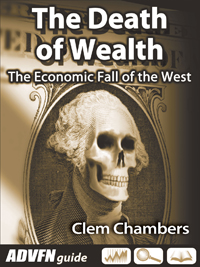Currently the automotive manual business of Haynes (LSE:HYNS) is making very little profit in the US and none in the UK, its two largest markets. The bulk of the profits it does make come from HaynesPro, a fast growing hi-tech business.
So what hope do we have that the manuals business can be turned around? I offer some observations and ideas:
•Slowing of the sales decline
Perhaps UK manual sales have already started rising again – see table. Also, the fall in the US was only 7.9% last year. And, they still shift over 1,000,000 books a year.
| Revenue from manuals £000s | 2016 | 2015 | 2014 | 2013 | 2012 |
| United Kingdom (mostly printed consumer manuals) | 4,918 | 4,741 | 5,950 | 6,808 | 7,415 |
| USA (manuals) | 11,021 | 11,963 | 12,685 | 11,164 | 12,888 |
| Australasia (manuals) | 1,093 | 1,859 | 2,751 | 2,553 | 2,496 |
| Rest of World (manuals) | 707 | 802 | 1,307 | 1,001 | 1,097 |
| Group printed product revenue | 17,575 | 19,454 | 22,955 | 22,209 | 24,692 |
•Manual costs already written off
They can keep churning out sales of books such as the bicycle manual, home DIY manual, Man manual, BBQ manual or Star Wars with little/no additional editorial cost. Despite the non-automotive business being only 10% of overall revenue, careful control of spending on risky new titles will mean that the backlist catalogue could be used as a cash cow.
Also, there are many classic car manuals going back decades. The updating cost of these will be very limited. Admittedly, sales volume might also be limited. But, hopefully, marginal revenue, when it does come in, will significantly exceed marginal cost.
Internet sales of physical books and downloads, together with rapid printing and postal distribution makes the sale of the tail end (low volume) of the manual inventory viable.
•Cost cutting
The directors seem very serious about lowering the cost base. We have already talked about the closure of printing and distribution in N America and the cost reductions in Scandinavia and Australia.
To those can be added evidence on boardroom savings. By retiring a couple of highly paid US-based directors the company will save £1.3 – £1.5m per year, equivalent to last year’s underlying profits (MCap is £19m). These two did not seem to be effective in stopping the value destruction in the US and so their loss will not be too meaningful in terms of foregone sales for want of their input. Their replacements are paid a fraction of what they were; also younger, hungrier, and now operating a leaner business.
Group board annual salaries and bonuses are now relatively low: e.g. financial director, James Bunkum is on £150k + bonus, capped at 20% of salary; J Haynes, CEO, £175k + bonus, capped at 20%
The salary bill across the organisation has been controlled. The table shows that staff costs are the same today as six years ago despite an almost doubling of revenue from HaynesPro, and general wage growth in the economy. Admittedly, volume of printed books has declined along with revenue and profits, which should have lowered staff costs anyway………To read the rest of this article, and more like it, subscribe to my premium newsletter Deep Value Shares – click here http://newsletters.advfn.com/deepvalueshares/subscribe-1


 Hot Features
Hot Features













